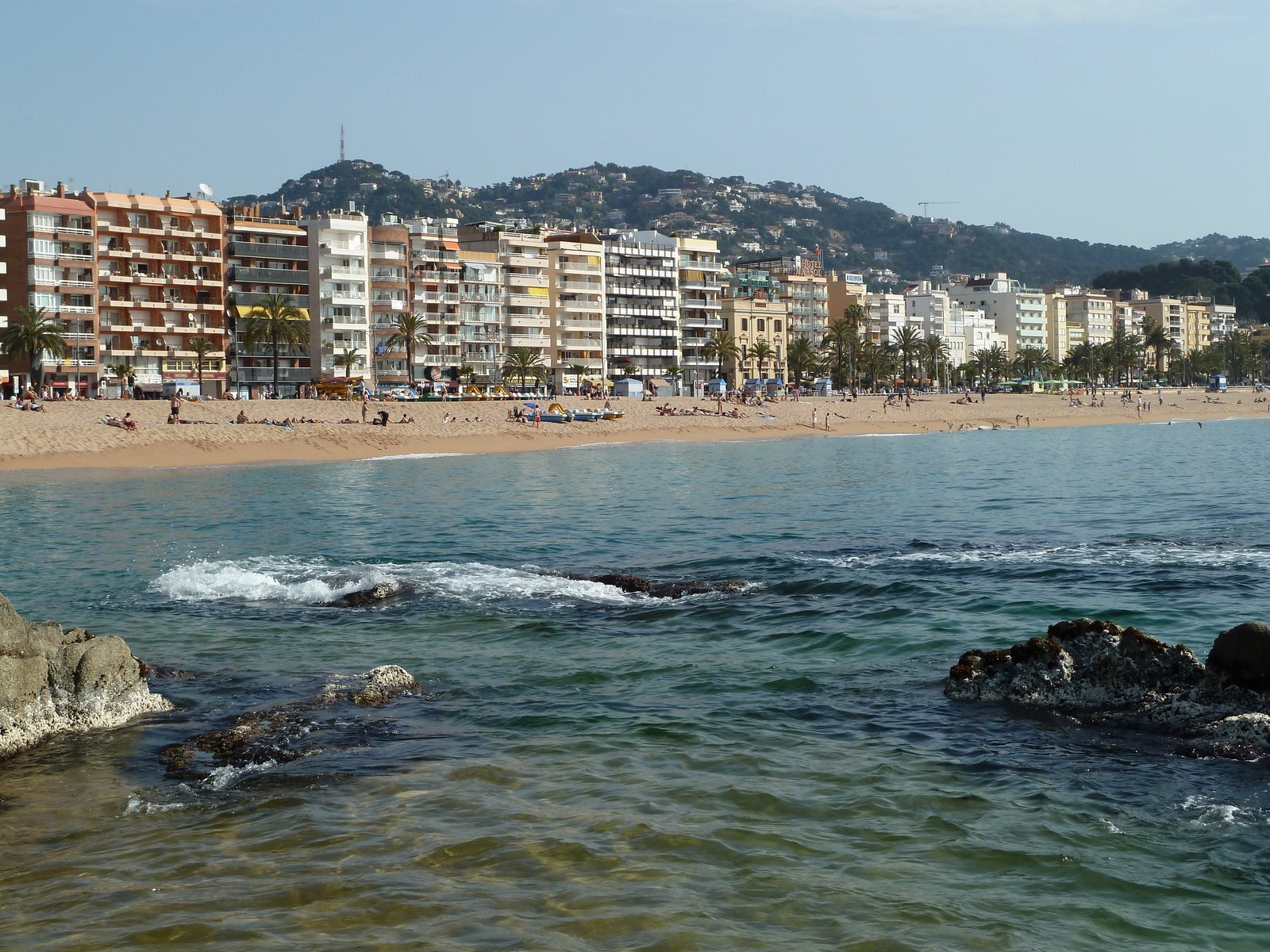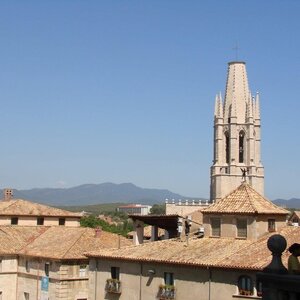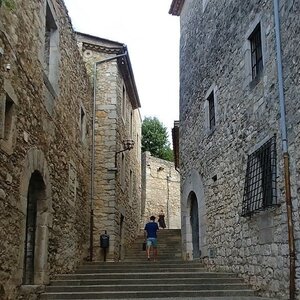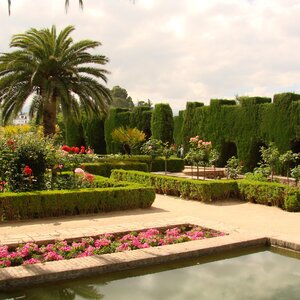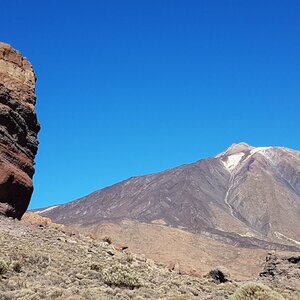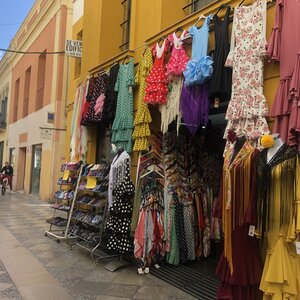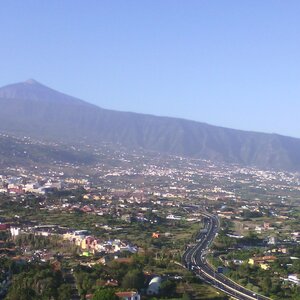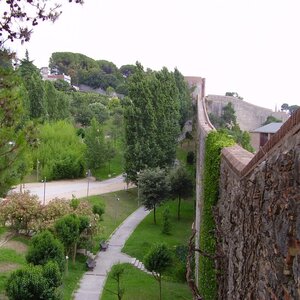The name Lloret de Mar is pronounced «Lloret de Mar» in Spanish. Although the town is known as a beach and party town, it has several interesting places for antiquity and history buffs.
Lloret de Mar Modernist Cemetery (Cementerio modernista)
Not every city has a cemetery that becomes a landmark. The Lloret cemetery was designed at the same time, by the same architect, at the turn of the nineteenth and twentieth centuries, so it has the same style and is an open-air art gallery.
The cemetery has 6 sectors with crypts, sculptures, artistic tombstones, and a columbarium in the Catalan Art Nouveau style. The most beautiful structures tend to belong to Catalan families who made good money from the colonization of the Americas and returned home at the end of the 19th century. Many graves have plaques with the names of the architects and sculptors who designed the tombstones — a kind of local museum of Catalan funerary art.
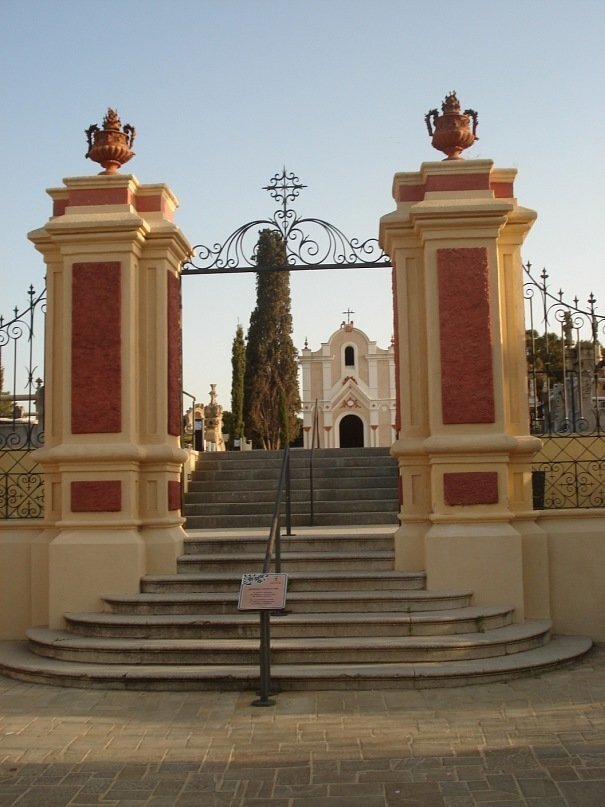

Church of the Holy Martyrs Kirik and Julitta (Orthodox Church of Lloret de Mar)
Not far from the cemetery is a small church. The building was built in the 11th century in the style of traditional rural Catalan architecture and resembles a Roman Catholic church, but belongs to the Russian Orthodox Church. It is the Church of Saints Cyric and Julitta, the oldest religious building within the city limits, called Ermita San Quirze in Catalan.
- Website: Orthodox Church of Saints Kirik and Julitta
- Opening hours: open on holidays, schedule of the Orthodox Church in Lloret de Mar.
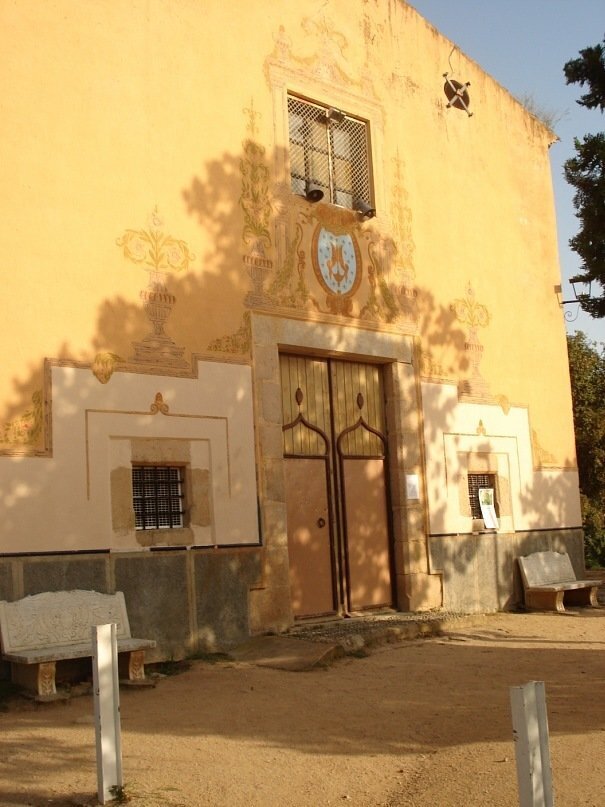
Church of Sant Romà
The Church of Iglesia san Roma is located near the town hall. Traces of Catalan Gothic, Renaissance and Art Nouveau have made it a center of attraction for tourists. It stands out with its unusual architectural shapes and colors, and is hard to pass by. The church once served as a fortress where locals hid from pirate raids, so it was surrounded by a real castle moat and had a lift bridge.
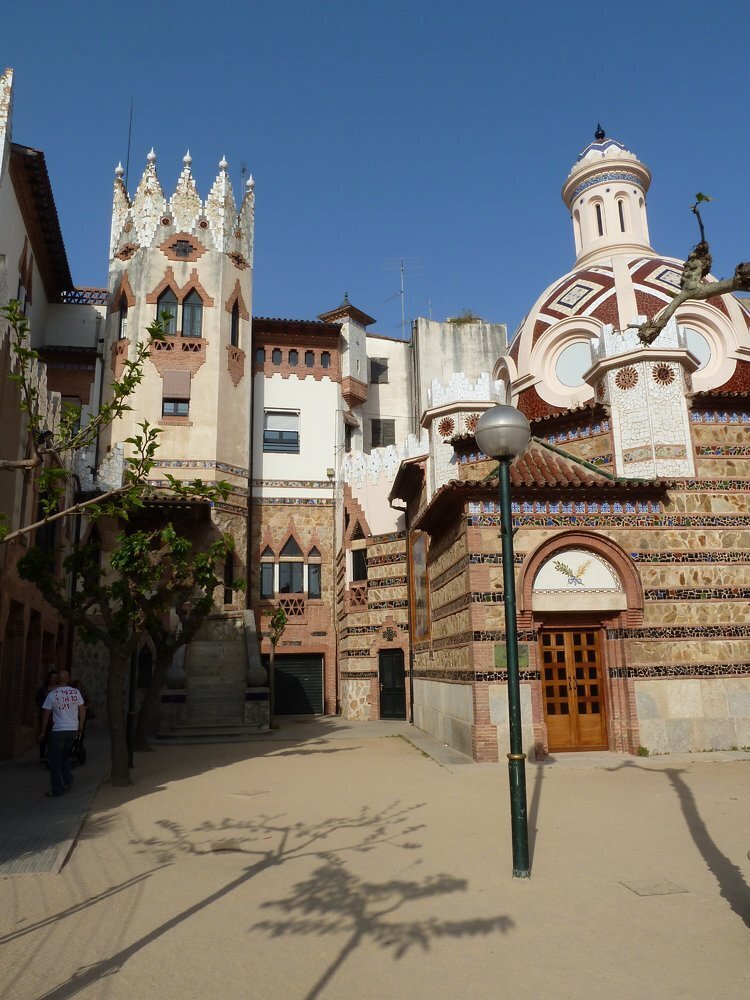
Castell d’en Plaja (Castell d’en Plaja)
The castle, built on a hill by Girona industrialist Narcis Playa, is visible from almost any point. The house was built in the middle of the twentieth century, although magnificently stylized as a knight’s castle, and has unwittingly become the city’s calling card.
You can’t go inside, it’s a private villa. But you can get up close or admire it from afar from one of the equipped walking trails along the coastline.
Castel Sant Joan (Castel Sant Joan)
Only one tower remains of the ancient defensive structure, San Joan Castle. It is located on the opposite side of the beach from the new Playa Castle and can only be reached by climbing steps. There is a museum in the castle.
The Fisherman’s Wife (Donna Marinera)
Remember when Lloret de Mar was a fishing village? The locals remember. And on the other side of the bay, opposite the Playa Castle, a bronze statue of «Donna Mariner, the collective image of fishermen’s wives, looks out to sea from the observation deck.
Donna Marinera has taken a place with a great view of the bay, so she does not suffer from loneliness: every day from morning to evening hundreds of tourists keep her company.
Los Jardines de Santa Clotilde (The Gardens of St. Clotilde)
When you stop by this park, remember that it is part of the National Heritage of Catalonia. The garden was laid out in the early 20th century in the style of Neo-Renaissance and Florentine gardens.
Mode of work: from 10:00 to 16:00.
Museum of the Sea (Museu del Mar Can Garriga)
Right on the seafront stands the Lloret de Mara Maritime Museum. The building was built by the Garriga brothers, who became rich from their trade with Cuba and, after returning home, built a rich villa. In 1981, the City Hall bought the building and set up the Museum of the Sea. The sea that had fed the locals for centuries.
Beaches and vacations with children in Lloret de Mar
The local sandy beaches, about 1.5 kilometers long, are excellent for children’s rest, so the town is filled with «package» family tourists with children. The bay is surrounded on all sides by cliffs, which protect it from the northern winds. On the beaches of Lloret de Mar warm and windless, the sea warms up to a very pleasant temperature, you can swim from May to October. The sand is unusual: it does not stick to the skin.
However, do not lose vigilance and do not swim beyond the buoys: almost immediately after them begins a large depth (up to 1 km) and strong current, which can carry to the open sea. Even near the shoreline, the sea goes deep quickly and quite sharply.
If the kids are still bored on the beach, they can be sent to the nearest water park, gnome park and even PortAventura (although it is almost 200 km away).

Gnomo Park.
Amusement park, obstacle course and paintball for kids.
- Mode of operation: seasonal, check the website.
- Website: Gnomo Park
Water World Water Park
On the outskirts of Lloret there is the Water World water park, which has a free shuttle bus from the bus station. This is probably the easiest and most cost-effective option for family entertainment. The bus departure times are indicated on separate boards.
- How much it costs: 35 € for adults, 20 € for children and people over 65 years old. Babies up to 80 cm tall go free of charge.
- Mode of operation: July — August from 10:00 to 19:00, the rest of the year — until 18:00.
- Website: Water World
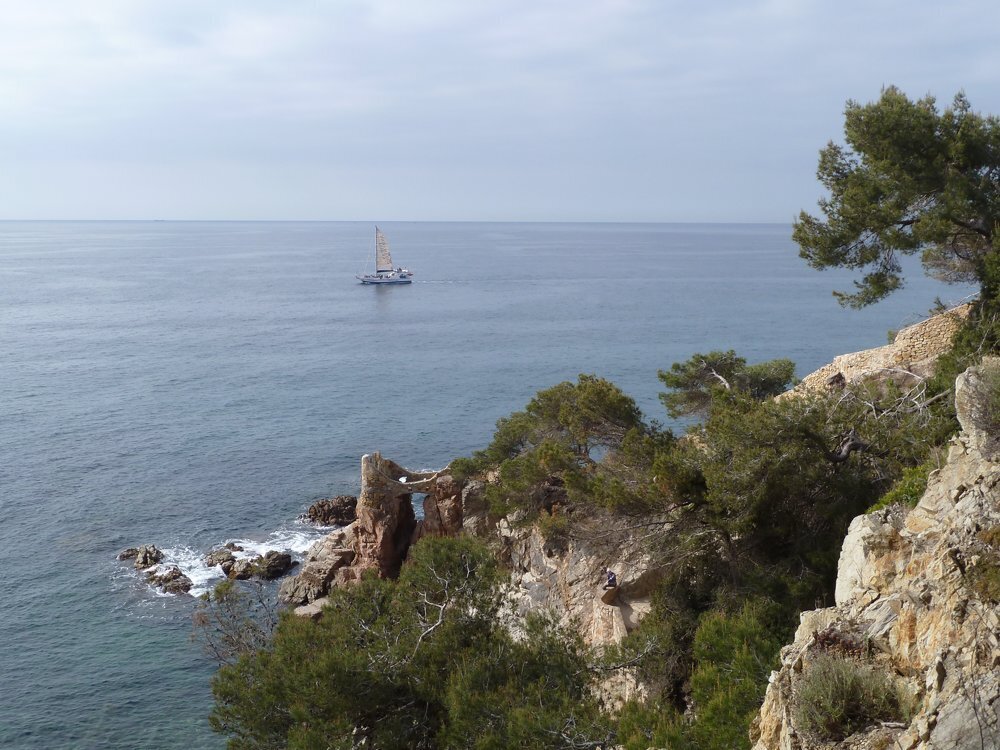
What to see near Lloret de Mar
Beach Lloret de Mar is often chosen as the main location from which it is convenient to travel around Catalonia when you get bored lying on the beach. Let me tell you where you can go from Lloret.
Barcelona and Girona
70 km southwest of Lloret is the capital of Catalonia, Barcelona, and 40 km north is the provincial capital of Girona. Buses run about once an hour and a ticket to Barcelona costs 11 €.
Salvador Dali Museum
80 km from Lloret, in the town of Figueres is the museum of surrealist artist Salvador Dali. It attracts tourists and admirers of the master’s talent from all over the world, it is a landmark of the Costa Brava and the whole of Spain. From Lloret it is more convenient to visit it together with a tour, the average price is 60 € together with transfer.
If you go on your own, don’t spare money for a good printed guide: the palace-museum is built like a labyrinth and is difficult to navigate. A guide or a book will also tell you about the stories and symbolism of the sculptures and paintings. A ticket to the museum without a guided tour costs 15 €, children are free.
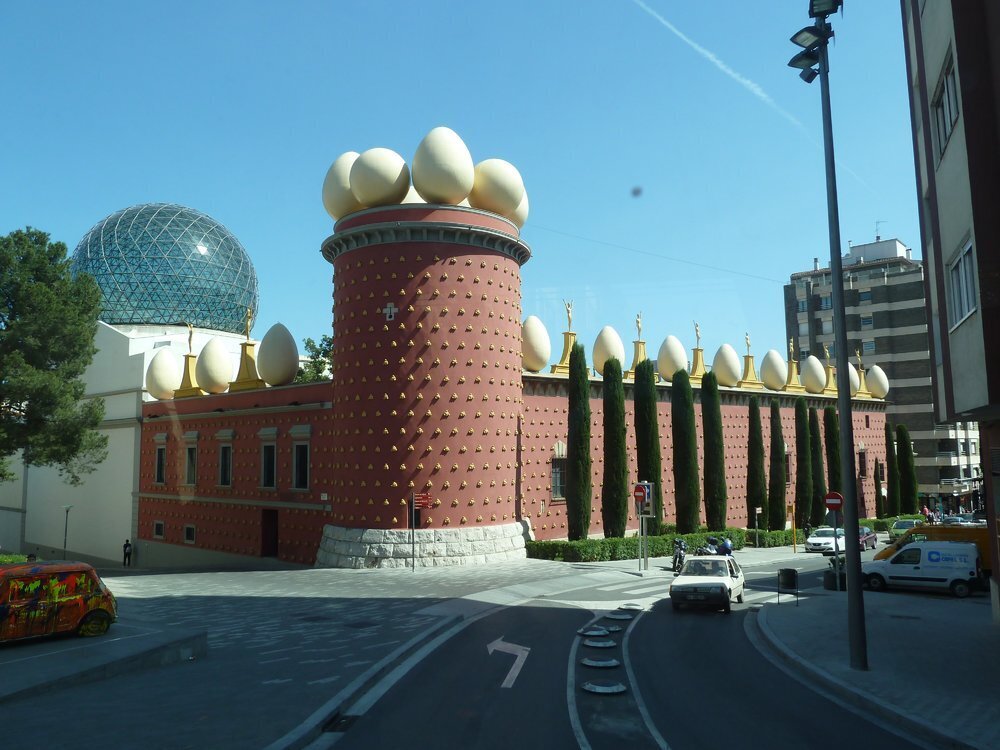
Blanes and Tossa de Mar
You can explore smaller neighboring towns such as Tossa de mar and Blanes on your own. Blanes is quite large by local standards, it is bigger than Lloret. Therefore, if you want peace and atmosphere of a medieval settlement by the sea, then go to the small Tossa, where there is a coastal fortress with preserved cannons, several churches. You can get to the town by boat from Lloret boat station in the center of the promenade, the price is 15 € round trip.
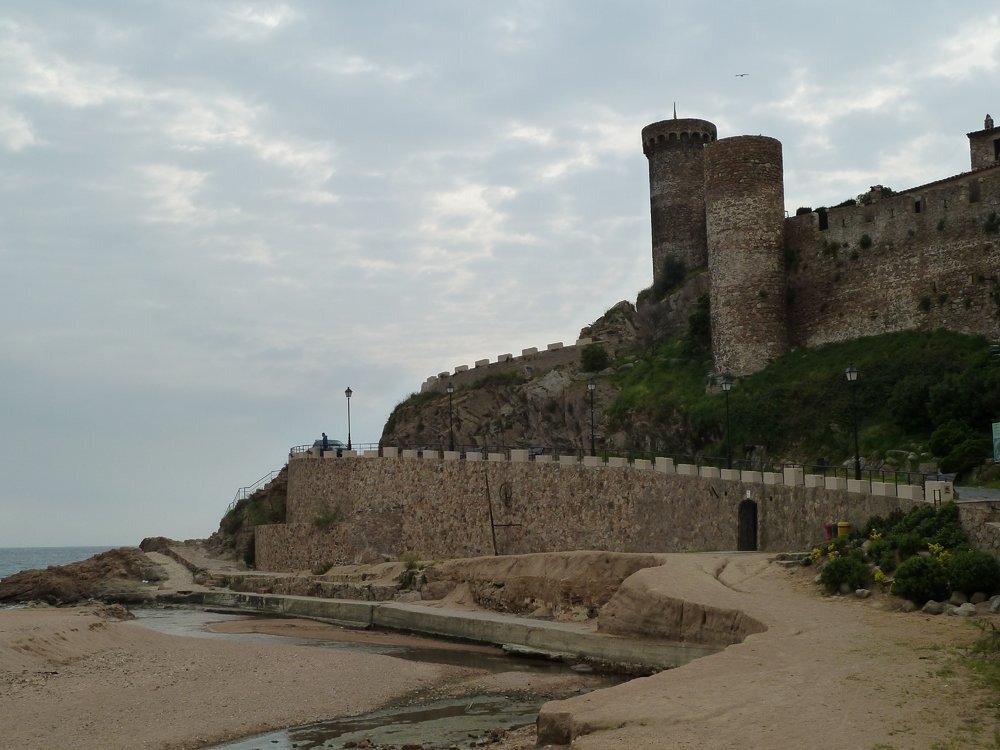
Sea excursions and mini-cruises
From Llorette it is convenient to explore the Costa Brava by sea — there are many services of water equipment rentals and boat trips in the town. A three-hour trip on a catamaran costs from 42 € per person.
What to do in Lloret de Mar in the evening?
As dusk falls, a second life begins, unlike that of daytime Lloret, when street musicians and relaxed tourists take to the waterfront to cool down after the heat of the day. Take your pick: go bowling (one game is 5 €), drink San Miguel in a waterfront bar while listening to the surf and eating patatas bravas, or spend the night in a club? By the way, local nightclubs are famous throughout Catalonia.
Shopping in Lloret de Mar
There are no big shopping centers in the city. For large purchases, clothes, it is better to go to Barcelona or the outlet La Roca Village, where a bus leaves every half an hour from the city bus station.
In Lloret itself there are only stores with the most basic assortment, but on every street there is a store with beach goods or a souvenir shop. Lloret is popular with Russian tourists, so many of the sales clerks know Russian, and all of them, without exception, speak English.
For those who miss pickles and books in their native language, there is a Russian store with goods from Russia, Ukraine, and Belarus.
Is it worth going to Lloret de Mar?
If you are traveling to Spain for the first time, starting in Catalonia is a good idea. Here you will combine several types of vacation: beach, sightseeing and gastronomic. Catalans are very hospitable, love and attract tourists in every possible way. And if living in Barcelona itself is expensive and noisy, Lloret is considered an inexpensive resort for families and young people. Here are mostly three-star hotels without pathos, a lot of Russians and excellent beaches.

